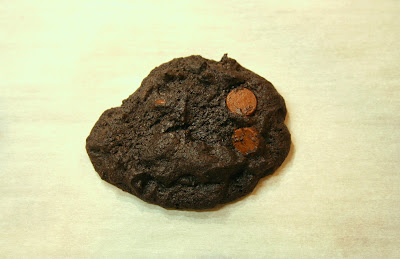Every year for about fifteen years now, I’ve intended to make hot cross buns for us to have on Easter morning. Having grown up on English children’s books, it just seemed the Mary Poppins-Beatrix Potter-Alice in Wonderland thing to do. Somehow, though, even before we had kids, I could never manage to get my act together. I’m not sure what it was that I found so daunting, or dissuading. Buying currants (they’re kind of traditional)? Setting the dough to rise? Waiting for the rise time? I can’t recall now, but suffice to say I still haven’t made hot cross buns.
This year, however, I made something that I’m not sure isn’t even better. Cinnamon Scrolls drew my attention as I was flipping through old Donna Hay magazines. They were the cover shot for issue #8, and they were so impressive looking, with their whirl of filling and their grand stature. I had to try them.
The dough is a simple yeast dough that the instructions say to make in a food processor, then transfer to a lightly oiled bowl for rising. I made one batch of dough and waited the hour and a half as instructed. When I returned to check on the dough, it hadn’t risen a single bit as far as I could tell. Not even a smidge. I thought back over the process of making the dough; had the milk not been warm enough? Or had the food processor rendered the yeast ineffective somehow? Can food processors mangle yeast so badly that they won’t work their little gaseous magic on dough? Was I a heartless killer of single-celled organisms??
With a sigh I consigned batch number 1 to the trash and started over. This time I made sure the milk was nice and warm (I even used the thermometer to measure it), and mixed the whole thing up in the stand mixer, just to avoid a possible murder rap. Once again I put the dough to rise and went about my business for an hour and a half or so. Once again, the dough looked exactly the same at the end of that time as it had at the beginning.
This time I shrugged and moved forward. If they flop, I told myself, they flop, and I’ll just deal with that disappointment when it happens. The recipe called for ground hazelnuts, but since I had almond meal on hand, I swapped that out. I think I’ve seen hazelnut meal in the stores, and if you want to use that, it’s what the recipe actually calls for, but I can highly recommend the almond flavor as well.
Well, they turned out to be wonderful. They rose nicely in the heat of the oven, as you can see, and actually looked as impressive in real life as they did in the magazine. This is what I love about Donna Hay—her food really does look as beautiful when you make it yourself as it does when her professional stylists get ahold of it. With Donna Hay’s books and magazines, even a rank amateur such as myself can produce something that looks like it belongs in…well, in the pages of a magazine or cookbook.
These little scrolls made an excellent Easter breakfast, and while I may one day make hot cross buns as I’ve so long intended to, for now I’m satisfied with these. The dough is firm enough to hold the filling, yet still flaky and tender. The filling itself is subtle, not too sweet, with a hint of cinnamon and almond. Their unusual shape makes them real attention grabbers, and they’re a snap to make. Even if the dough doesn’t rise, I urge you to forage ahead and make them anyway. You won’t be sorry.

Cinnamon Scrolls
from Donna Hay magazine, issue #8
makes 8 scrolls; how many that will serve depends on how hungry and/or how willing you are to share
3 cups all-purpose flour
¼ cup sugar
¾ teaspoon salt
1 ½ teaspoons active dry yeast
1/3 cup lukewarm milk
2 tablespoons lukewarm water
2 eggs
4 oz butter, softened
Filling
3 ½ oz butter, softened
½ cup brown sugar
3 teaspoons ground cinnamon
¾ cup almond meal
Preheat oven to 330 degrees F. Place flour, sugar, salt, yeast, milk, water, and eggs in a food processor and process until the mixture forms a dough. With the motor running, add the butter, a little at a time, until combined. Place the dough in a lightly oiled bowl, cover with a clean tea towel and set aside in a warm place for 1 ½ hours or until the dough has doubled in size (N.B. don’t get discouraged if it doesn’t rise; mine never did, not either batch).
To make the filling, place the butter, sugar, cinnamon, and almond meal in a bowl and mix to combine. Set aside.
Roll out the dough on a lightly floured surface to an 18” x 10” rectangle approximately ¼” thick, with the long side facing you. Spread evenly with the filling, leaving a 1” border at the top. Roll up the dough, starting with the side closest to you, shaping it into an even roll.
Cut into 8 pieces and place in paper baking cups (available at baking supply stores) or a baking tray, or in paper cupcake liners in a muffin tin. Bake 25 minutes or until lightly golden. As always seems to be the case with Donna Hay recipes, mine took closer to 35 or 40 minutes to get golden, but start checking at 25 minutes.











